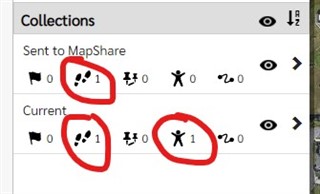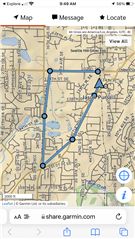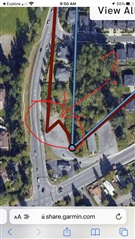I've used the mini, explorer+, and SE InReach devices and have gotten very used to the tracking system with mapshare and earthmate app. However, i just got the mini 2 and things are fundamentally different. I was playing around with tracking on the Mini 2 and noticed major differences.
Firstly, I should say that collections now make a lot more since they are prominent in the Explore app. They didn't exist in earthmate app.
Tracking on older devices was divided into Tracking points and log points. Both tracking points and log points would be displayed on the Earthmate app map. However, on the mini 2, tracking is made up of tracking points and activity points. The mini 2 uses the Explore app and only the Activity "path" is displayed. The tracking points are not displayed on the Explore app map. The track points are sent via satellite to the mapshare.
Another unexpected thing. After tracking started and stopped and everything is synced to the cloud -- the Explore app only shows the Activity, but not the new track in the library. However, both the new activity and the new track are shown in the library on the Explore website (and mapshare). So, there is this weird disconnect between what is actually IN the collection.
Explore App (after completing tracking):

Explore website/mapshare:
is this expected behavior? As a long distance hiker I am interested interested in the tracking path. I’m trying to understand this new way of tracking. Is the activity path supposed to merge with or make the track path more accurate? If not, then the activity path just seems to junk up my mapshare page.
also, why isn’t there a document for people like me coming from the “old” way. Seems like a gap in the documentation.
thank you





